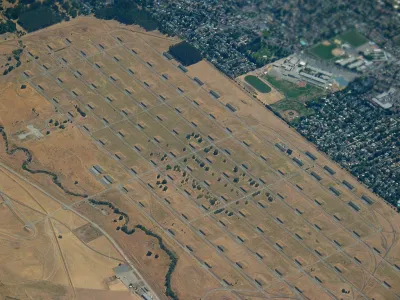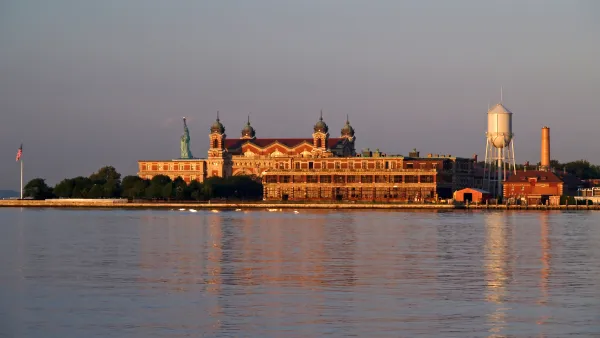Plans for temporary facilities designed to house between 25,000 to 45,000 people have been revealed by Time Magazine. Sites in Alabama, Arizona, California,

Philip Elliott and W.J. Hennigan report:
The U.S. Navy is preparing plans to construct sprawling detention centers for tens of thousands of immigrants on remote bases in California, Alabama and Arizona, escalating the military’s task in implementing President Donald Trump’s “zero tolerance” policy for people caught crossing the Southern border, according to a copy of a draft memo obtained by TIME.
Phyllis L. Bayer, the assistant secretary of the Navy for energy, installations and environment for the Navy Secretary's approval. The memo anticipates a request from the Department of Homeland Security.
The memo includes details on the exact locations of the proposed detention centers. Detention centers would hold 25,000 immigrants at abandoned airfields "just outside the Florida panhandle near Mobile, Alabama, at Navy Outlying Field Wolf in Orange Beach, Alabama, and nearby Navy Outlying Field Silverhill."
"The memo also proposes a camp for as many as 47,000 people at former Naval Weapons Station Concord, near San Francisco; and another facility that could house as many as 47,000 people at Camp Pendleton, the Marines’ largest training facility located along the Southern California coast," according to the article. "The planning memo proposes further study of housing an undetermined number of migrants at the Marine Corps Air Station near Yuma, Arizona."
The plan expects to pay $233 million to build and operate the "temporary" facilities for six months. There are a few more key reported facts included in the article, including that these new facilities will be far from the first occasion for the United States to use military bases to house immigrants. "In 2014, the Obama Administration placed around 7,700 migrant children on bases in Texas, California and Oklahoma. The temporary shelters were shuttered after four months."
For commentary on the draft memo, see an article by Ed Kilgore that briefly discusses the potential reasons for building these facilities on military sites.
FULL STORY: Exclusive: Navy Document Shows Plan to Erect 'Austere' Detention Camps

Analysis: Cybertruck Fatality Rate Far Exceeds That of Ford Pinto
The Tesla Cybertruck was recalled seven times last year.

National Parks Layoffs Will Cause Communities to Lose Billions
Thousands of essential park workers were laid off this week, just before the busy spring break season.

Retro-silient?: America’s First “Eco-burb,” The Woodlands Turns 50
A master-planned community north of Houston offers lessons on green infrastructure and resilient design, but falls short of its founder’s lofty affordability and walkability goals.

Test News Post 1
This is a summary

Analysis: Cybertruck Fatality Rate Far Exceeds That of Ford Pinto
The Tesla Cybertruck was recalled seven times last year.

Test News Headline 46
Test for the image on the front page.
Urban Design for Planners 1: Software Tools
This six-course series explores essential urban design concepts using open source software and equips planners with the tools they need to participate fully in the urban design process.
Planning for Universal Design
Learn the tools for implementing Universal Design in planning regulations.
EMC Planning Group, Inc.
Planetizen
Planetizen
Mpact (formerly Rail~Volution)
Great Falls Development Authority, Inc.
HUDs Office of Policy Development and Research
NYU Wagner Graduate School of Public Service




























